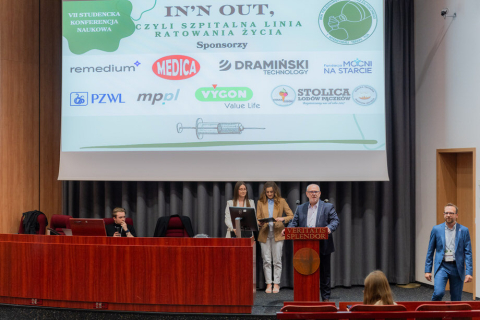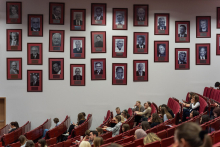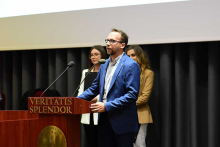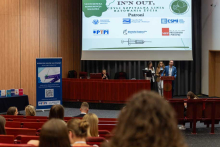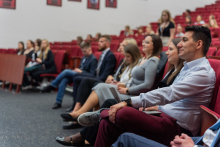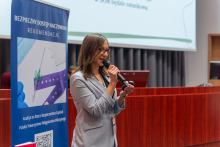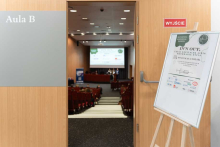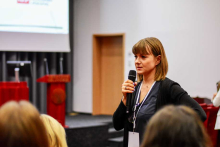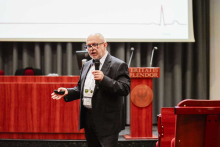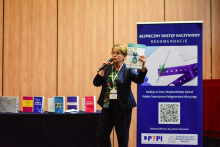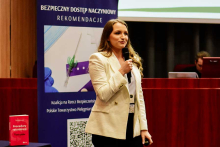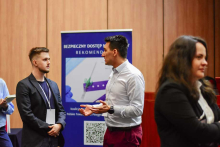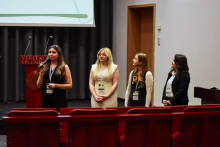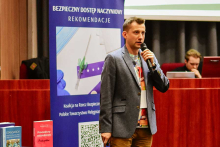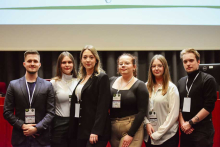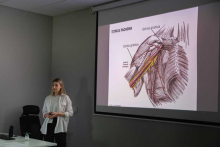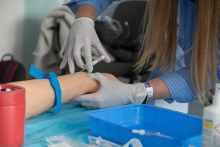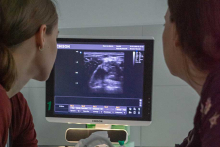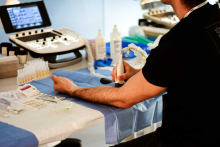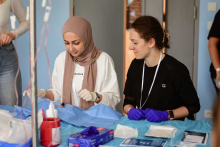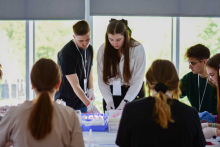The conference was held on May 9 and 10. It was organized by the TIVA Student Scientific Club of Anesthesia and Intensive Care Nursing. The club is based at the Department of Anesthesiology and Intensive Care MUW.
Every year, the conference brings together students of nursing, paramedics and medicine, among others, as well as people who work in hospitals on a daily basis.
- We are very pleased to see in front of us people full of energy and commitment who want to explore their knowledge of anesthesiology and intensive care - said Karolina Misiorek, representative of the Student Scientific Circle, during the opening of the conference.
- I hope that today will be full of inspiration and discussion - stressed Maciej Latos, scientific supervisor of TIVA Student Scientific Club. And he noted that he is glad that the tradition of holding the conference has been maintained.
What you could hear about
Anesthesiology and intensive care is an interdisciplinary field, and the specialists who deal with it must have comprehensive knowledge and cooperate with other medical professions. Therefore, the conference program covered a wide variety of issues, divided into four thematic blocks and a lecture session.
Resuscitation in the presence of the patient's family
In the first session on emergency medicine, you could hear about resuscitation in the presence of the patient's family. Natalia Sak-Dankowsky, PhD presented the topic, which is still controversial.
The European Resuscitation Council 2021 recommendations include a provision that resuscitation teams should offer the opportunity for family to be present during CPR when it is possible and safe to do so, and for one of the team members to assist them as needed.
- If it's so specific, why aren't we doing it, and many people who hear about it wonder what it's all about - said Natalia Sak-Dankowsky.
The explanation can be still dominant paradigm of conduct based on the biomedical model, which focuses on the treatment of disease. What would help? Implementing the principles of person-centered care, which focuses on human treatment and includes the family in this process.
Oxygen as a medicine
The next session began with a lecture on oxygen therapy in the ICU by Dariusz Kosson, MD, PhD.
- Oxygen is a very interesting element. An element that, on the one hand, we need for life. On the other hand, its uncontrolled supply leads to complications. Therefore, we can look at oxygen as any medicine - the speaker explained.
He then discussed the parameters indicating that there is not enough oxygen in the body, explained how the need for oxygen can be determined, how to administer and dose it, and what tools to use.
- At the moment there are theories to limit the administration of oxygen to patients - said Dariusz Kosson, MD, PhD - but we must always look at the patient holistically and assess whether he or she needs this oxygen at any given time due to his or her condition.
Hospital experiences vs. family ties
- The presence of a loved one is one of a patient's basic rights - said Małgorzata Jadczak during a speech on forming family ties through hospital experiences. And then she emphasized: - It is we who are really the patient's advocate when it comes to his rights - the nursing staff, especially in intensive care - because there the patient will not speak up for himself.
The presence of families in the ICU is a difficult situation, especially for nursing staff. However, it should never be forgotten that the patient has loved ones. Relatives who feel frustration, shock, fear, irritation, uncertainty, guilt. The speaker recalled that in 2010, the post-traumatic stress system was recognized in families of patients in intensive care. However, she pointed out that all these negative emotions can be minimized by, among other things, appreciating the involvement of families in discussions about the patient, acknowledging their emotions, trying to understand them, listening, and finally recognizing that the ICU patient wants the family to be there for them.
Other topics
Jolanta Wołosianka spoke about emergency cannulation; Ignacy Sakiewicz spoke about patient care in the ED setting; Piotr Kołodziejczyk shared his experience of working in the emergency department; Marta Moskal spoke about interventional teams; Grzegorz Cichowlas spoke about the role of nutrition in patient recovery; Tomasz Maleńczyk on the role of the perfusionist in the hospital's lifeline; representatives of the SKN of Anesthesia and Intensive Care Nursing GUMed on preventive measures in the area of gastrointestinal infections; Lena Serafin on stress-free working in nursing.
In the third session, operating theater staff gave a speech. Joanna Kosińska spoke about emergency patients, Adam Surowaniec about hemodynamic monitoring during anesthesia and ICU, Bartosz Sadownik about airway work, Agnieszka Sobolewska about the role of nursing in preventing sequelae in intraoperative hypothermia, and Anna Gąsior about communication as the key to overcoming difficulties in vascular access.
The fourth session was devoted to postoperative care. Speakers included: Stanisław Dudek, who spoke about the role of ultrasound in trauma; Weronika Czapska, who spoke about patient comfort in the ICU; Marta Jurkiewicz, who spoke about creating an optimal environment in chronic wound care.
The lecture session on the second day of the conference featured Wiktoria Katana with a lecture on “Anatomy of the hand and neck,” Karolina Grzegocka with a lecture on “Vascular ports - patient comfort in long-term therapy,” Ewelina Kustra with a lecture on “How to properly construct a safe vascular line,” and Kamila Gos with a lecture on “Principles of infusion management.”
Workshops
The participants of the event registered for the workshops could learn how to insert vascular ports, learn how to use ultrasound and learn the principles of cannulation under ultrasound guidance, learn the secrets of correct vascular lines and cannulation of visible vessels. All under the guidance of experts.
Photographs: Communication and Promotion Office as well as Nicola Klimczak and Julian Remiszewski
